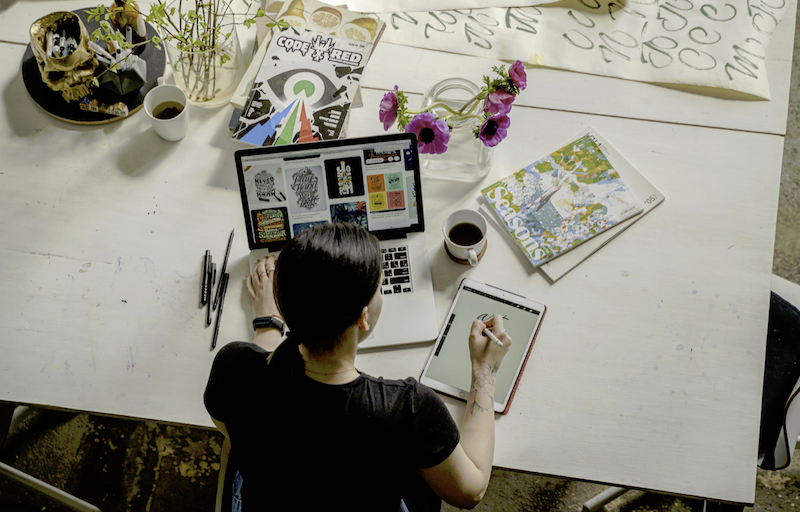Tips For Creating a Great Art Portfolio
Branded Content by Cosmic Press
If you want to work as an artist, you need a portfolio that shows what you can do and highlights your skills to any potential employer.
There’s a big difference between an average portfolio and one that’s truly outstanding, so here are some pieces of advice on what you need to do to make yours a real head-turner.
Showcase Your Best Work: How to Select the Pieces for a Stellar Art Portfolio
In order for your portfolio to really get people talking, and for the right reasons, you need to start by selecting your best pieces to include in it. This can be daunting, but it’s essential if you want your portfolio to stand out.
First and foremost, you need to choose artwork that is representative of your current style and skill level. Don’t include any old projects from years ago – choose only recent ones that truly showcase where you are today as an artist. Also, make sure each piece demonstrates something about who you are, or what kind of artist, designer, or illustrator you want people to see when they look through your portfolio.
Secondly, don’t include too many works in one go – no more than 10-15 pieces max should do it. You need quality over quantity here; carefully curate a portfolio that is impactful and tells your story in the most effective way. Give yourself time to reflect on each piece before including it, ask friends and family for honest feedback if you need some extra opinion.
Finally, as with any art project, practice makes perfect. Spend plenty of time honing your craft, and refine every single detail of each piece until you are completely satisfied with the end result. This will ensure that only your very best work goes into creating an art portfolio that’s truly worth showing off.
Ultimately, if you don’t think your portfolio is ready for the limelight, be willing to hold off on putting it out there. First impressions matter, so make sure yours isn’t soured because you were in a rush to just have something to represent you. If in doubt, take inspiration when you discover original art for sale at Singulart, and look at what you’re up against.
Step Up Your Presentation Game: Simple Ways to Give your Portfolio That Professional Edge
Now that you have selected the pieces for your art portfolio, it’s time to think about presentation. Because if it isn’t presented well, it won’t land you a job.
It should go without saying, but you need to use high quality materials when displaying your work. Print onto thick card or paper if possible, and avoid flimsy materials as this will detract from the overall impact of each piece.
Also, be mindful of how you arrange each artwork in relation to one another. It’s best to create a cohesive visual flow by paying attention to elements such as positioning, size and color palette.
Of course it’s not just physical copies of your portfolio that need to be considered; you also need to be on top of digital presentations too! Ensure any online portfolios look just as good (if not better) than their physical counterparts, with plenty of clear images or screenshots at high resolutions, plus captions and descriptions where necessary.
Add Personality and Tell a Story with Keywords, Captions and Descriptions
As mentioned, your art portfolio should be more than just a collection of artwork – it’s an opportunity to tell your story as an artist. Adding captions or descriptions to each piece is the perfect way to give potential employers some insight into who you are; plus it provides lots of useful keywords for search engine optimization in a digital portfolio too.
Start by introducing yourself in the very first sentences – explain how long you’ve been creating art/designing/illustrating etc., discuss what inspires you, and why this particular portfolio reflects that journey.
Then move onto individual pieces – use descriptive language such as adjectives, metaphors or similes where relevant. Don’t forget important details such as dates created, medium used (acrylic paint? digital software?), techniques employed (hand-drawn? 3D printing?).
Finally end with a call-to-action sentence – invite them to contact you if they have any questions. You’ll get more out of your portfolio if there’s this prompt in the mix.
Final Thoughts
Remember that your portfolio is a living, breathing reflection of where you’re at as an artist, so it’s worth updating it over time, even if you manage to bag your dream job with an early iteration.
Branded content furnished by our promotional partners. The Daily Sundial editorial staff is not involved in its production. Content does not reflect the views or opinions of the editorial staff.





